QuestionQUESTION: i have had my ball python for two years now and i just bought two three month old igaunas ... my snake use to live in a fifty gallon tank ... but i have built a cage out of plywood and fence and its about 4 feet wide and six feet tall ... my question is can my snake and igaunas live together....
ANSWER: Hi Louis, There are several reasons why that combination would not work out well but the main one is that the natural diet of ball pythons includes small mammals, birds and lizards. Even if your ball python does not show interest in the iguanas they would still be under the enormous stress of having what they view as a predator living just a few feet away. Snakes make very poor candidates for mixed community tanks for those reasons alone.
You may end up building a second enclosure for your iguanas as they mature. If they turn out to be both males they will not be able to share a cage due to territorial aggression. A male can sometimes be overly aggressive toward a female cage-mate. Two females are usually the best combination to house together.
---------- FOLLOW-UP ----------
QUESTION: well they have been in there for about two weeks now and everything is ok ... my snake stays balled up behind the plastic pond i have , it has a water filter in it . but the snake stays there untill night and when i turn off the days lights .. than the iguanas hang out at the top of the cage untill he goes back .... one more question i have is when do i start taming my iguanas
ANSWER: Hi Louis, You will need to keep monitoring them closely. If you notice any of them, including your snake, not thriving or doing well I would strongly encourage you to separate them. There may never be a dramatic event, like suddenly one less iguana, but the effect of stress can slowly take its toll on both the iguanas and your ball. The lights for the iguanas are probably not providing sufficient heat at the bottom for your python. If you have not already I would suggest a second heat source like a heat pad for him. If you notice your iguanas are not feeding well you may need to set up a feeding dish in the upper part of the cage rather then the cage floor. Likewise for their water source.
I like to let small iguanas settle in a bit and start feeding well before I start handling and taming them. After that then I try to work with them a bit everyday by either picking them up, stroking them or feeding them treats, like bananna by hand. Try letting them move from hand to hand and avoid clutching them if you can. They feel safer and act calmer if they are higher up. Keep your hands around chest and shoulder level rather then holding them down at your waist level.
---------- FOLLOW-UP ----------
QUESTION: ok thank you for your advice ... i have put a platforn up higher in the cage where the igaunas can eat comfortably .. and he snake stays balled up in the corner , but i guess thats why they call them ball pythons ... but i keep a blanket on the part of the cage that is fence and it stays pretty warm in there ... i got a heat lamp down low for the snake and a light up high for the igaunas but the bulb in the one up top is not a heat bulb for now . its a regular flood light bulb .. plus i dont like tpo keep them both on cause that uses alot of electricity .... but i keep my thermostat in my apartment on 70 degrees so that should be warm enough for them ... right ... plus the one heat light on and the blankets keeping ti competly coverd up ... so let me know if you think its warm enough
AnswerHi Louis, Any incandescent bulb like the flood light you are using will produce heat. The iguanas should have a basking temperature of about 100 F. If you are getting that temp. with the flood then it's fine. You don't have to pay extra money for a light with a picture of an iguana on the box! They should really also have access to a UVB producing bulb. Those are fluorescent and use very little electricity. The ball python should have a warm spot that is in the 90 - 95 F range. It's especially important that he have access to that temperature for several days after he has eaten. He needs the higher temperature to properly digest. The best way to verify both those basking temperatures is just to put a thermometer there for a half hour and check it.
You will need to make sure the iguanas don't climb on the lower light. Reptiles can't tell right away that something is too hot and they may stay on it until they are burned.

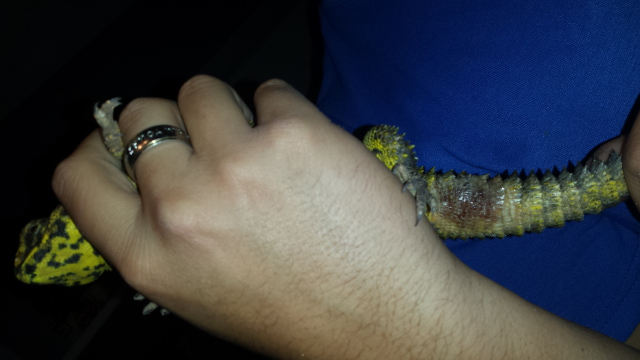 please help
Question
sore him
Please tell me what thi
please help
Question
sore him
Please tell me what thi
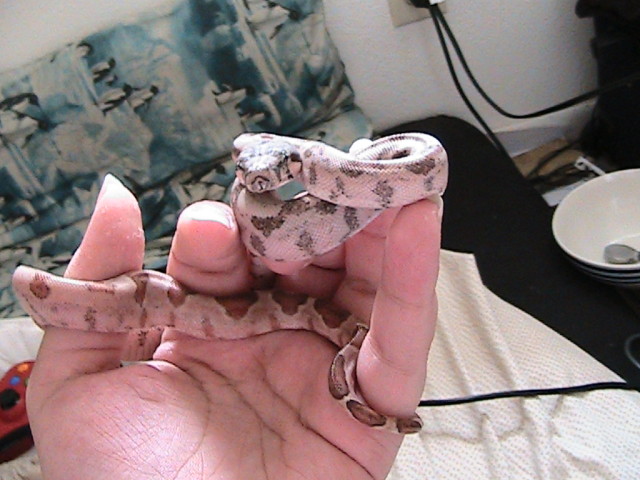 Baby Hog Island
QuestionQUESTION: Hi, my Hog Island Boa is a month old
Baby Hog Island
QuestionQUESTION: Hi, my Hog Island Boa is a month old
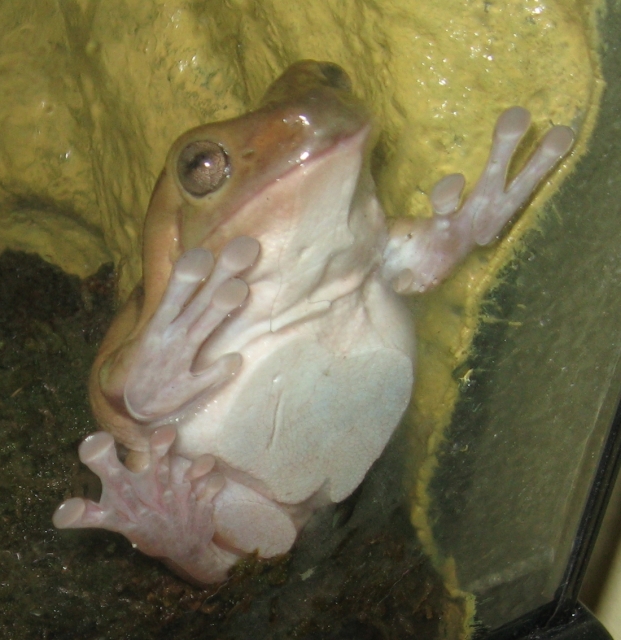 dumpy tree frog eating habits
QuestionAre her feet normal?
QUESTION: I have ba
dumpy tree frog eating habits
QuestionAre her feet normal?
QUESTION: I have ba
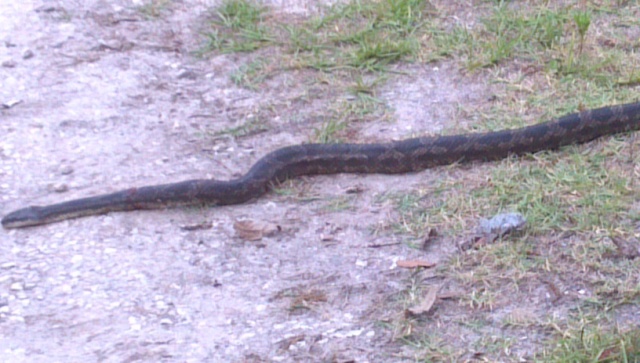 snake curled up in my back tire
Question
pic 1
Hello, I would like to know what
snake curled up in my back tire
Question
pic 1
Hello, I would like to know what
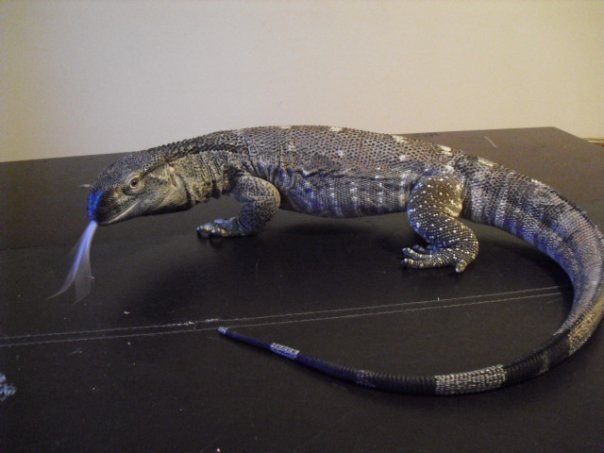 Is salt water ok?
QuestionQUESTION: Hi, Im moving to the coast in a coupl
Is salt water ok?
QuestionQUESTION: Hi, Im moving to the coast in a coupl